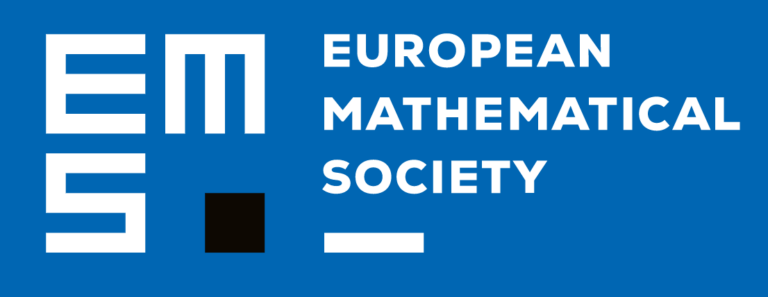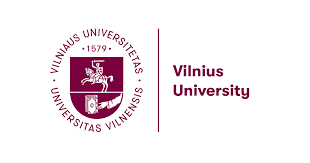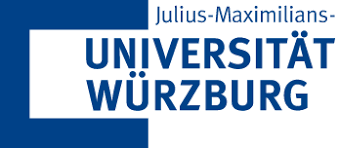WORKSHOP
Universality, Zeta-Functions, and Chaotic Operators
Universalité, fonctions zêta et opérateurs chaotiques
7 – 11 August 2023
Organizing Committee
Comité d’organisation
Ramūnas Garunkštis (Vilnius University)
Kohji Matsumoto (Nagoya University)
Jörn Steuding (University of Würzburg)
Vagia Vlachou (University of Patras)
The value distribution of the Riemann zeta-function and its well known connection with the distribution of prime numbers (Riemann hypothesis) plays a central role in analytic number theory. An astonishing aspect is the following approximation property: If an arbitrary analytic, zero-free function f is defined on a sufficiently small disk, centered at zero, the zeta-function approximates f uniformly on a sequence of shifts (in the critical strip), i.e., given f and ε > 0, there exists τ such that
max |s|≤r |ζ(s + 3/4 + iτ ) − f(s)| < ε;
moreover, the set of τ has positive lower density. This remarkable result was proved by Voronin in 1973/75 and it is an explicit example of a so-called universality phenomenon: A (divergent) limit process (the sequence of shifts of the zeta function) leads to a dense image in a suitable space (here a vector space of admissible functions). Voronin’s universality theorem has been generalized in various ways: a) to other important Euler products, and b) to more analytic generalizations such as the Hurwitz zeta-function or the Selberg zeta-function associated to Riemann surfaces. Furthermore, related approximation phenomena have been discovered and studied, such as restrictions of the translates (discrete universality), strong recurrence, or simultaneous approximation (joint universality). Besides these impressive explicit results, however, other universality phenomena have been studied for more than one hundred years, starting with their discovery in 1914 by Fekete (about a divergent power series approximating all continuous functions on a compact interval with its partial sums); this direction is still a hot topic in analysis, and the variety of results is remarkable.
One of the main goals of the workshop is to bring together the two largely independent communities investigating universality phenomena and related questions, in order to present current progress and key research questions in their respective fields to each other. Some researchers continue the investigations of Voronin; this group can be considered as part of the analytic number theory community. The other group has its roots in the theory of functions and functional analysis. There exist several aspects of universality phenomena that are of interest in both communities, and an exchange of perspectives and ideas would definitely be fruitful and stimulating future research! In fact, there are already some successful joint works. Moreover, the upcoming 50th anniversary of Voronin’s discovery would be a perfect occasion for this event.
La distribution des valeurs de la fonction zêta de Riemann et son lien bien connu avec la distribution des nombres premiers (hypothèse de Riemann) jouent un rôle central dans la théorie analytique des nombres. Un aspect étonnant est la propriété d’approximation suivante: Si une fonction analytique arbitraire, sans zéro, f est définie sur un disque suffisamment petit, centré sur zéro, la fonction zêta approxime f uniformément sur une séquence de décalages (dans la bande critique), c’est-`a-dire que, étant donné f et ε > 0, il existe τ tel que
max |s|≤r |ζ(s + 3/4 + iτ ) − f(s)| < ε;
de plus, l’ensemble des τ a une densité inférieure positive. Ce résultat remarquable a été prouvé par Voronin en 1973/75 et il est un exemple explicite d’un phénomène dit d’universalité: Un processus limite (divergent) (la séquence de décalages de la fonction zêta) conduit `a une image dense dans un espace approprié (ici un espace vectoriel de fonctions admissibles). Le théorème d’universalité de Voronin a été généralisé de diverses manières: a) à d’autres produits d’Euler importants, et b) à des généralisations plus analytiques telles que la fonction zêta de Hurwitz ou la fonction zêta de Selberg associée aux surfaces de Riemann. En outre, des phénomènes d’approximation connexes ont été découverts et étudiés, tels que les restrictions des translations (universalité discrète), la récurrence forte ou l’approximation simultanée (universalité conjointe). Outre ces résultats explicites impressionnants, d’autres phénomènes d’universalité sont étudies depuis plus de cent ans, à commencer par leur découverte en 1914 par Fekete (à propos d’une série de puissance divergente approchant toutes les fonctions continues sur un intervalle compact avec ses sommes partielles); cette direction est toujours un sujet brûlant en analyse, et la variété des résultats est remarquable.
L’un des principaux objectifs de l’atelier est de réunir les deux communautés largement indépendantes qui étudient les phénomènes d’universalité et les questions connexes, afin de présenter l’une `a l’autre les progrès actuels et les principales questions de recherche dans leurs domaines respectifs. Certains chercheurs poursuivent les investigations de Voronin; ce groupe peut être considéré comme faisant partie de la communauté de la théorie analytique des nombres. L’autre groupe a ses racines dans la théorie des fonctions et l’analyse fonctionnelle. Il existe plusieurs aspects des phénomènes d’universalité qui intéressent les deux communautés, et un échange de perspectives et d’idées serait certainement fructueux et stimulerait les recherches futures! En fait, il existe déjà quelques travaux conjoints réussis. De plus, le prochain 50e anniversaire de la découverte de Voronin serait une occasion parfaite pour cet événement.
SPEAKERS
Johan Andersson (Örebro University) Universality with Scaling
Gautami Bhowmik (Université de Lille) Zeta-Functions of Lattices
Paulius Drungilas (Vilnius University) Multiplicative Dependence of Two Integers Shifted by a Root of Unity
Artūras Dubickas (Vilnius University) On the Fractional and Integral Parts of Geometric Progression
Kenta Endo (National Institute of Technology, Anan college) Effective Result for Multidimensional Denseness Theorem for L-Functions in the Selberg Class and its Application for Universality
Romuald Ernst (Université du Littoral Côte d’Opale) Furstenberg Families, Densities and Linear Dynamics
Anne-Maria Ernvall-Hytönen (University of Helsinki) Euler’s Divergent Series and Primes in Arithmetic Progressions
Ramūnas Garunkštis (Vilnius University) On Zeros of Zeta-Functions from the Extended Selberg Class
Karl Grosse-Erdmann (Université de Mons) Lévy’s Phenomenon in the Plane and on the Disk
Christopher Hughes (University of York) Discrete Moments of the Riemann Zeta Function
Shota Inoue (Tokyo Institute of Technology) Joint Value Distribution of Dirichlet L-Functions in the Strip 1/2 < σ < 1
Roma Kačinskaité (Vilnius University) One More Case of Discrete Universality for the Classes of Zeta-Functions
Tomas Kondratavičius (Vilnius University) Sum of the Epstein Zeta over the Riemann Zeta Zeros
Junghun Lee (Kyushu University) The Riemann Zeta Function on Arithmetic Progression and Denseness Properties
Jürgen Müller (Trier University) Dynamics of the Backward Taylor Shift on Bergman Spaces
Renata Macaitiene (Vilnius University) Limit Theorems for the Epstein Zeta-Function
Myrto Manolaki (University College Dublin) On Universal Radial Approximation
Konstantinos Maronikolakis (University College Dublin) Properties of Abel Universal Functions
Kohji Matsumoto (Nagoya University) On the Value-Distribution of the Logarithms of Symmetric Power L-functions in the Level Aspect
Quentin Menet (Université de Mons) The Frequency of Chaos
Masahiro Mine (Sophia University) On the Gonek Conjecture
Keita Nakai (Nagoya University) Universality for the Iterated Integrals of Logarithms of L-Functions in the Selberg Class
Vassili Nestoridis (University of Athens) Universal Taylor Series in One Variable, on Open Questions and Approximation in Several Variables
Łukasz Pańkowski (Adam Mickiewicz University) Joint Value-Distribution of Shifts of the Riemann Zeta-Function
Neea Palojärvi (University of Helsinki) Conditional Estimates for Logarithms and Logarithmic Derivatives in the Selberg Class
Sumaia Saad Eddin (Austrian Academy of Sciences) Effective Universality for Dirichlet L-Functions with Respect to Characters
Darius Šiaučiūnas (Vilnius University) On Joint Universality of Dirichlet L-Functions
Raivydas Simenas (Vilnius University) Hurwitz Zeta-Function is Prime
Lejla Smajlovic (University of Sarajevo) Study of the Ruelle Zeta Function Twisted by a Unitary Multiplier System
Athanasios Sourmelidis (Graz University of Technology) Continuous and Discrete Universality of Zeta-Functions: Two Sides of the Same Coin?
Jörn Steuding (University of Würzburg) Curves of the Riemann Zeta-Function and Universality
Ade Irma Suriajaya (Kyushu University) The Pair Correlation Conjecture, the Alternative Hypothesis, and an Unconditional Montgomery Theorem
Masatoshi Suzuki (Tokyo Institute of Technology) Aspects of the Screw Function of the Riemann Zeta-Function Including Value-Distribution
Marc Technau (Graz University of Technology) On Polynomials With Roots Modulo Almost All Primes
Vagia Vlachou (University of Patras) Disjoint Universality Connected with Differential Operators
Saeree Wananiyakul (Chulalongkorn University) Asymptotic Behavior of Sum of Values of Ideal Class Zeta-Function




